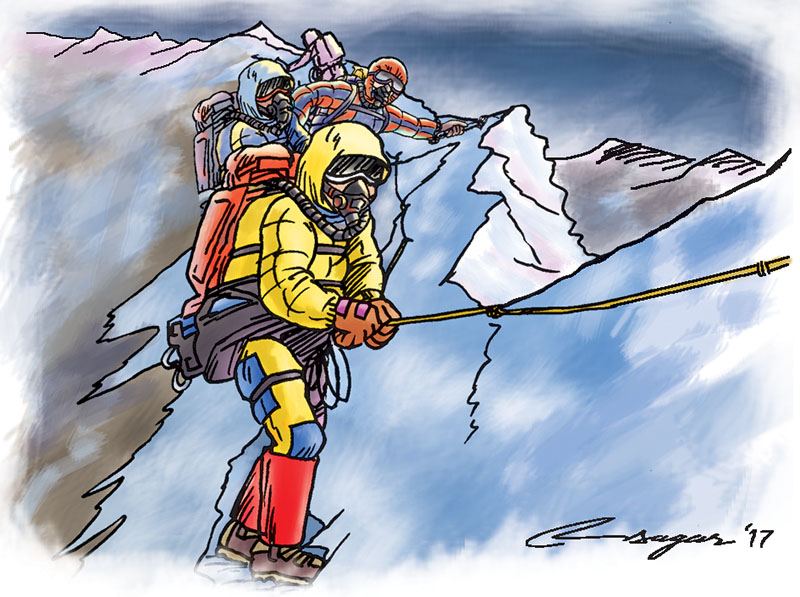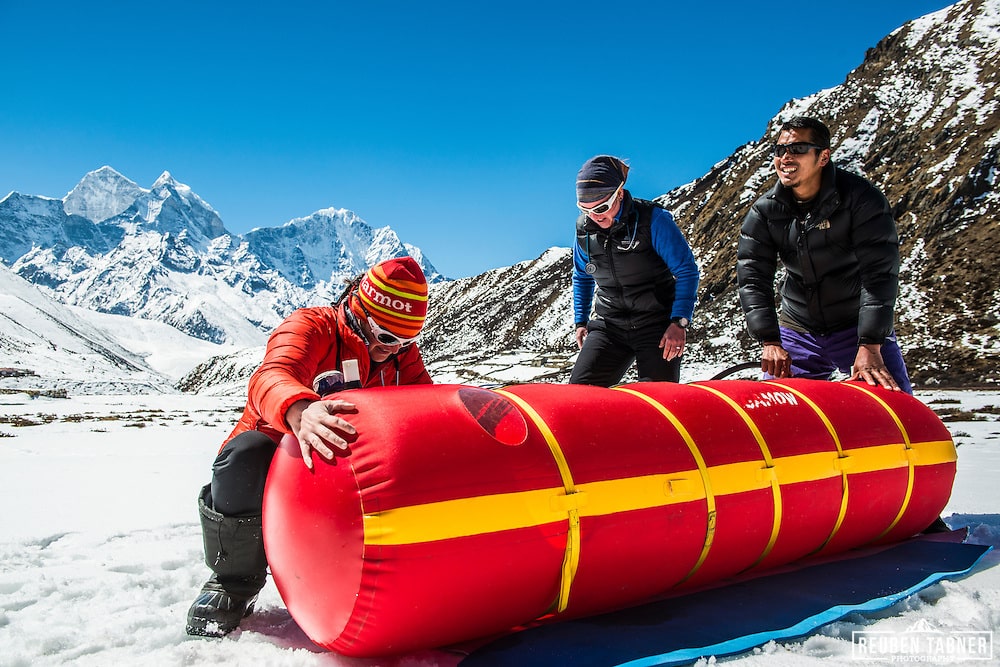
Source: https://thehimalayantimes.com/opinion/altitude-sickness-dos-donts (Ratna Sagar Shrestha/THT)
According to Wikipedia, high-altitude pulmonary edema, also known as HAPE, is a life-threatening form of non-cardiogenic -pulmonary edema that can occur in healthy people at altitudes usually above 8,200 feet. HAPE can occur in people who live at low altitudes and rapidly travel to altitudes above 8,200 feet without acclimating.
HAPE is a severe form of altitude sickness. High altitude pulmonary edema was misdiagnosed for centuries as pneumonia in people climbing at high altitudes. While many different factors increase your chances of getting HAPE, there is limited knowledge about this condition. Additionally, high-altitude pulmonary edema is one of the most common causes of death at high altitudes as there is not any sufficient medical support in these remote areas.
To lower your chances of getting altitude sickness and possibly HAPE, you should climb high and sleep low. In other words, if you are hiking or skiing at high elevations, you should slowly acclimatize to the altitude. This is why there are multiple base camps while climbing very high peaks such as Mount Everest. People who climb mountains like Everest have to climb up several thousand feet a day and go back down to a lower-elevation base camp to sleep to allow their bodies to adjust.
The Lake Louise Consensus definition of high-altitude pulmonary edema includes symptoms of shortness of breath at rest, cough, weakness or decreased exercise performance, and/or chest tightness or congestion. Some signs of HAPE are Crackles or wheezing while breathing, central blue skin color. tachypnea (aka rapid breathing) and/ or tachycardia (aka rapid heart rate). The treatment of high-altitude pulmonary edema includes rest, administration of oxygen, and descent to a lower altitude. If this condition is diagnosed early, recovery is rapid with a descent of only 1500-3000 feet.
If descent is not immediately possible, the use of a Gamow bag will increase atmospheric pressure to help the patient recover. Ultimately, this bag is a portable hyperbaric chamber that simulates a several thousand-foot decrease in altitude without requiring the victim to move at all. This device is a necessity on high-altitude expeditions. All in all, mountain climbing at high altitudes is a very fun and adrenaline-rushing activity, but it is very important to acclimate to avoid serious conditions like HAPE.

Lake Louise Consensus Definition of HAPE: https://www.high-altitude-medicine.com/AMS-LakeLouise.html